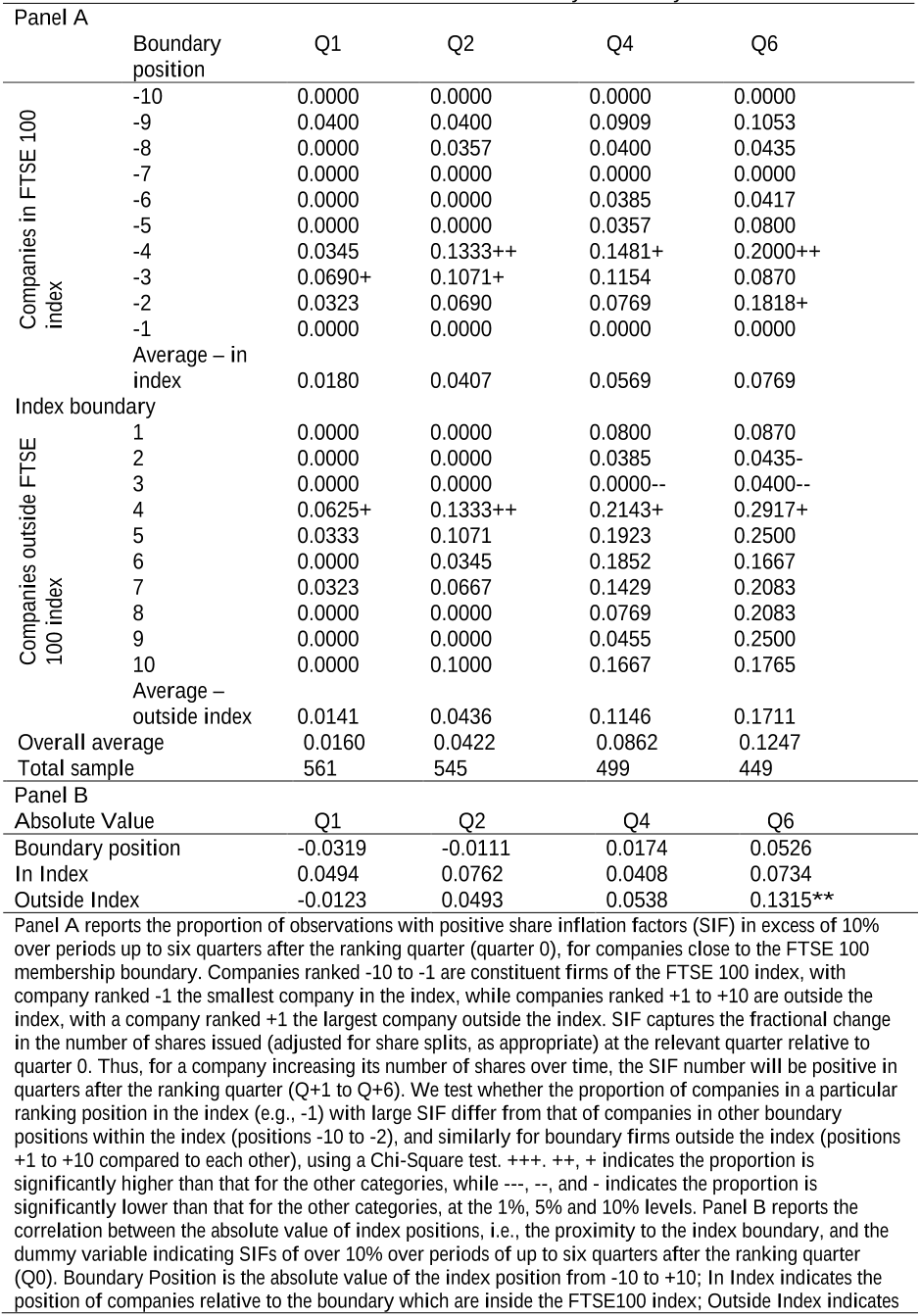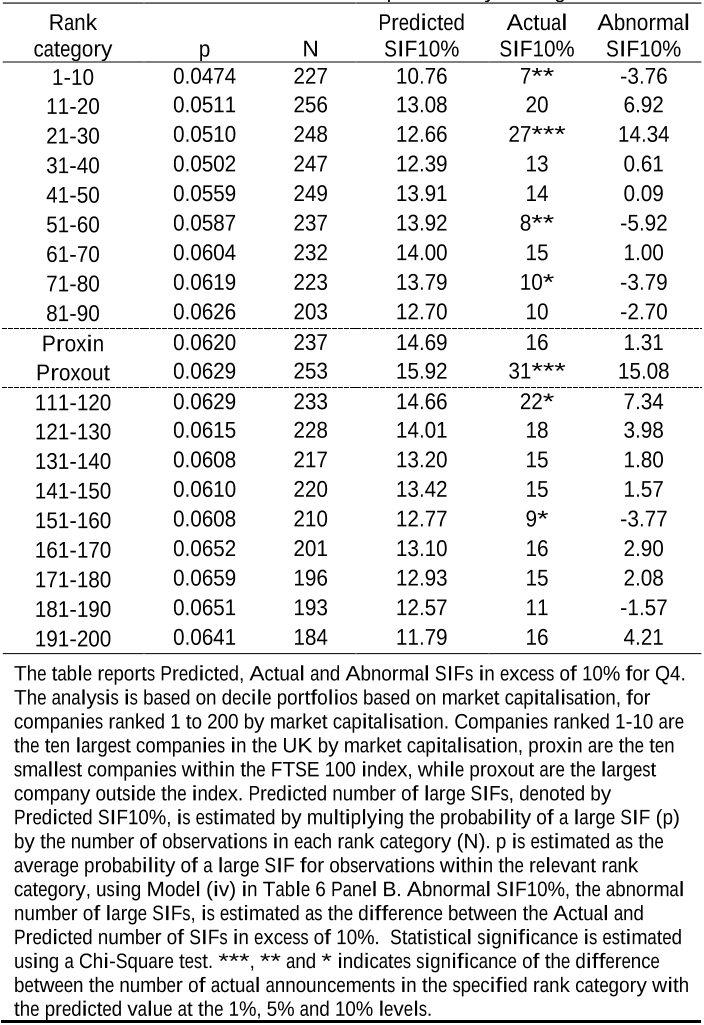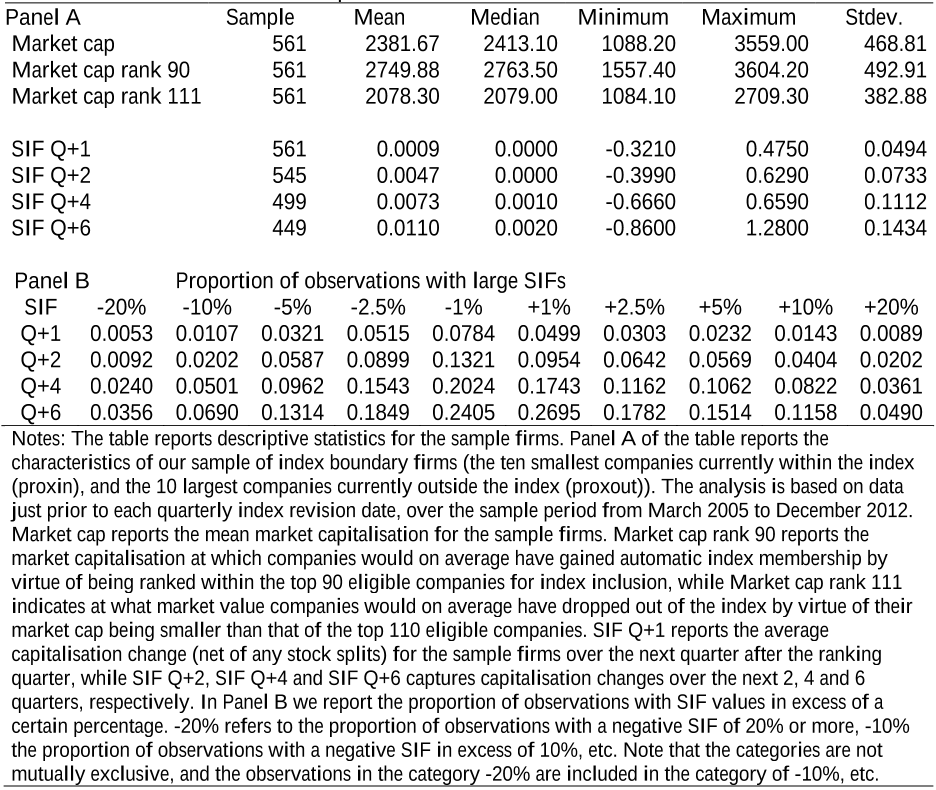
Edinburgh Research Explorer
Gaming the FTSE 100 Index
Citation for published version:
Danbolt, J, Hirst, IRC & Jones, E 2018, 'Gaming the FTSE 100 Index', British Accounting Review, vol. 50,
pp. 364-378. https://doi.org/10.1016/j.bar.2017.09.005
Digital Object Identifier (DOI):
10.1016/j.bar.2017.09.005
Link:
Link to publication record in Edinburgh Research Explorer
Document Version:
Peer reviewed version
Published In:
British Accounting Review
General rights
Copyright for the publications made accessible via the Edinburgh Research Explorer is retained by the author(s)
and / or other copyright owners and it is a condition of accessing these publications that users recognise and
abide by the legal requirements associated with these rights.
Take down policy
The University of Edinburgh has made every reasonable effort to ensure that Edinburgh Research Explorer
content complies with UK legislation. If you believe that the public display of this file breaches copyright please
contact openaccess@ed.ac.uk providing details, and we will remove access to the work immediately and
investigate your claim.
Download date: 10. Aug. 2022

1
British Accounting Review
Gaming the FTSE 100 Index
Jo Danbolt
1,*
, Ian Hirst
2
, and Edward Jones
3
1
University of Edinburgh Business School, 29 Buccleuch Place, Edinburgh, EH8 9JS, UK, Email:
Jo.Danbolt@ed.ac.uk
2
School of Management and Languages (Emeritus), Heriot-Watt University, Riccarton, Edinburgh, EH14 4AS,
UK, Email: I.Hirst@hw.ac.uk
3
School of Management and Languages, Heriot-Watt University, Riccarton, Edinburgh, EH14 4AS, UK,
Email: E.Jones@hw.ac.uk
*
Corresponding author.
Keywords:
Index Game; Index Effect; FTSE 100; Stock Market Index; Additions and Deletions

2
Gaming the FTSE 100 Index
Abstract
In the UK (unlike the US and many other countries), companies enter and exit the main stock
market index (FTSE 100) according to a clear set of rules based on market capitalisation.
This creates an opportunity to game the system to secure or retain FTSE membership by
manipulating capitalisation. There is considerable evidence in extant studies that index
membership is beneficial, both for shareholders and managers. Hence, companies may adopt
financial strategies designed to acquire or retain membership. We investigate two types of
gaming. We define strategic gaming as a situation in which companies, which may initially
be a number of places away from the boundary, make abnormal share issues cumulatively
over several quarters. We find strong supportive evidence for this. For tactical gaming, which
would involve companies in the very closest proximity to the boundary, we do not. Our
analysis shows that gaming is limited to companies outside the index trying to get in.
Companies that are close to exit do not game to retain their index place. The high natural
volatility of market capitalisation makes success of gaming uncertain. Our central estimate is
that about 5% of entries to the index appear to be the result of gaming.

3
Gaming the FTSE 100 Index
1. Introduction
This paper investigates whether quoted companies in the UK manage their market
capitalisations to gain entry, or avoid relegation, from the main stock market index, the FTSE
100. There is a very substantial empirical literature suggesting that membership of major
stock market indices increases a company’s share price and therefore lowers its cost of
capital. Under these circumstances, membership becomes a valuable asset for companies. We
would expect, other factors equal, that they would, where possible, actively seek to acquire
this asset.
It is well established that companies manipulate their earnings and accruals
(Burgstahler and Dichev, 1997), manage their own reward systems (Burns and Kedia, 2006;
Heron and Lie, 2007), manage forex prices and interest rates (banks) (Gandhi et al., 2016;
Ryder, 2014), and manipulate contract bids (Connor, 2011). Why should they not manage the
FTSE system too? If there are specific rules which identify companies to be added and
removed from the index, management can attempt to game the system by pushing their
company to the front of the queue. Using data relating to the FTSE 100 index in the UK, this
paper explores the evidence for such managerial index gaming. To our knowledge, this
particular game has not been identified in the literature before.
The paper is structured as follows. We start by looking at the significance of indexing
in current equity markets. Then we shall briefly review the arguments and evidence for
downward-sloping equity demand curves. If demand is downward-sloping, the extra demand
from index-tracking funds would generate higher share prices and lower costs of equity
capital for FTSE 100 member companies. Under these circumstances, companies, acting in
the interest of their shareholders, should be expected to actively seek membership. We shall

4
also review the empirical evidence for share price and other changes associated with index
membership changes. We shall explain the rules governing entry and exit from the FTSE 100,
noting that the rules in the UK are very different from those in the US. Our hypothesis that
companies manage entry would not make sense in the US system. We then set out our
hypotheses, which relate both to strategic gaming (initiated when a company may be a
number of places from the margin) and tactical gaming (undertaken when the company is in
very close proximity to the boundary for index inclusion). We test them using data from 2005
to 2012. Finally, we consider possible explanations for the management behaviour we
uncover.
2. The significance of indices
The practical significance of indices has been greatly enhanced by academic theories.
The Efficient Markets Hypothesis and Capital Asset Pricing Model have encouraged a
passive style of investing based on a portfolio that includes the full set of risky assets
available in the market, weighted by their market capitalisations.
The practical consequence of these developments has been that index-tracking funds
now hold a significant portion of the global equity pool. In the US, the percentage rose from
11.4% in 2003 to about 18.4% in 2013 (Doshi et al., 2015), while in the UK, 20% of the
market was in fully passive strategies in 2014 (Investment Association Asset Management
Survey, 2015). Passive funds now account for about 20% of global fund management assets,
and while assets under management in active funds grew by 54% to $24trn between 2007 and
2016, funds in passive mutual funds grew by 230% to $6trn over the same period, amid
concerns about bad performance and high fees of active funds (Mooney, 2016).









